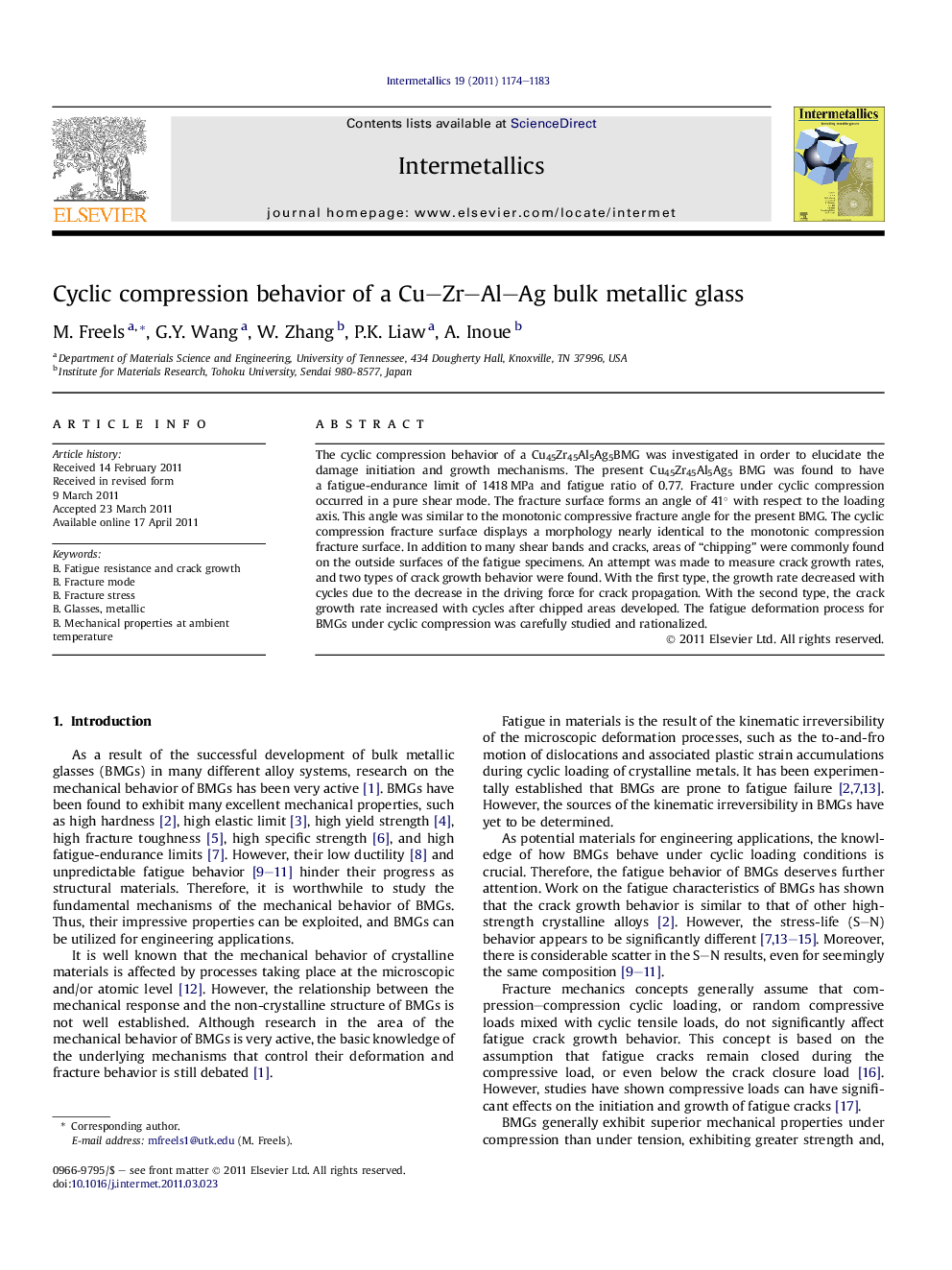| Article ID | Journal | Published Year | Pages | File Type |
|---|---|---|---|---|
| 1600665 | Intermetallics | 2011 | 10 Pages |
The cyclic compression behavior of a Cu45Zr45Al5Ag5BMG was investigated in order to elucidate the damage initiation and growth mechanisms. The present Cu45Zr45Al5Ag5 BMG was found to have a fatigue-endurance limit of 1418 MPa and fatigue ratio of 0.77. Fracture under cyclic compression occurred in a pure shear mode. The fracture surface forms an angle of 41° with respect to the loading axis. This angle was similar to the monotonic compressive fracture angle for the present BMG. The cyclic compression fracture surface displays a morphology nearly identical to the monotonic compression fracture surface. In addition to many shear bands and cracks, areas of “chipping” were commonly found on the outside surfaces of the fatigue specimens. An attempt was made to measure crack growth rates, and two types of crack growth behavior were found. With the first type, the growth rate decreased with cycles due to the decrease in the driving force for crack propagation. With the second type, the crack growth rate increased with cycles after chipped areas developed. The fatigue deformation process for BMGs under cyclic compression was carefully studied and rationalized.
Graphical abstractFigure optionsDownload full-size imageDownload as PowerPoint slideHighlights► The cyclic compression behavior of a Cu–Zr–Al–Ag bulk metallic glass was investigated in order to elucidate the damage initiation and growth mechanisms. ► The present Cu–Zr–Al–Ag bulk metallic glass was found to have a fatigue-endurance limit of 1418 MPa and fatigue ratio of 0.77. ► Fracture under cyclic compression occurred in a pure shear mode similar to the monotonic compressive fracture behavior. ► An attempt was made to measure crack growth rates, and it was found that the growth rate decreased with cycles.
